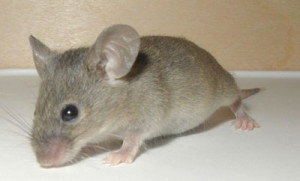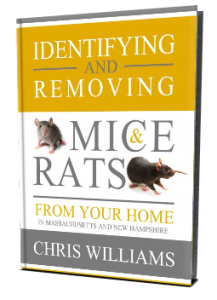Where Do Mice Nest?
By Chris Williams on October 1, 2014.
My daughter says she saw a mouse in her bedroom. As you can imagine, she’s freaking out and we are tearing the house apart trying to find its nest. Where do mice normally make their nests? T.Y., Loudon, NH
 Mice are very flexible about where they build their indoor nests. Their main requirement is that they be in a protected place near a food source. In general, a mouse’s nest will be found within 30 feet of its food.
Mice are very flexible about where they build their indoor nests. Their main requirement is that they be in a protected place near a food source. In general, a mouse’s nest will be found within 30 feet of its food.
The Kitchen is the #1 Nest Site
In a home, mouse nests are most often in or near the kitchen because, to a mouse, the kitchen is one big smorgasbord. Food for a mouse can be cookies left sitting on a counter, pet food in a dish or spilled on the floor, potatoes stored under the sink, or simply crumbs under the stove or along baseboards. It doesn’t take much to feed a mouse.
Mouse nests are found most often at ground level, in hidden, dark corners. Typical mouse nest sites in a kitchen are in the pan drawer under the stove, under or in back of the refrigerator, in the insulation inside appliances, in lower kitchen cabinets (especially in the back corners), behind the kick plates at the base of cabinets, and in back corners of pantries or utility closets.
The 30 foot travel range for a mouse can be in any direction (up, down, sideways) from its food, so if your daughter’s room is directly above the kitchen, the mouse could be nesting in her closet and moving down the wall void to eat in the kitchen. Or, the mouse could be nesting in a wall void down the hall and visiting your daughter’s room to feed on junk food crumbs.
Away from the kitchen, mice will nest wherever they find dark warmth and soft nest material in an undisturbed area such as in the stuffing inside furniture, the insulation in wall voids, under dirty clothes on a closet floor, or in a box of old rags. Mice will also nest in stored cardboard boxes, in piles of newspapers, and wherever you store pet food or bird seed. See How to Check for Mice in Your House.
What Does A Mouse’s Nest Look Like?
A mouse’s nest is not always a neatly defined ball of material. It is more often a loose assemblage of whatever small soft materials the female can find like carpet fibers, bits of fabric, shredded paper or toilet paper, dryer lint, bits of string or yarn, and grass or leaves if available (see Could You Recognize a Mouse Nest?). A typical nest will also contain bits of hoarded food. There may be mouse droppings (elongated black pellets) in or near the nest.
Finding the Nest is Secondary
Of course, you don’t need to first find the nest to control mice. In fact, all of our control methods, such as baits and traps, kill mice that are out and about foraging, not mice that are in their nests. It’s useful to know where the nest is because that gives you an idea of how far away you can place your controls, but it’s not necessary. Instead of spending time and effort trying to find out where the mice live, pick up the phone, give Colonial Pest a call, and let us handle the problem.
 Want to learn more about mice & rats?
Want to learn more about mice & rats?
Download our free e-book Identifying and Removing Mice & Rats From Your Home!